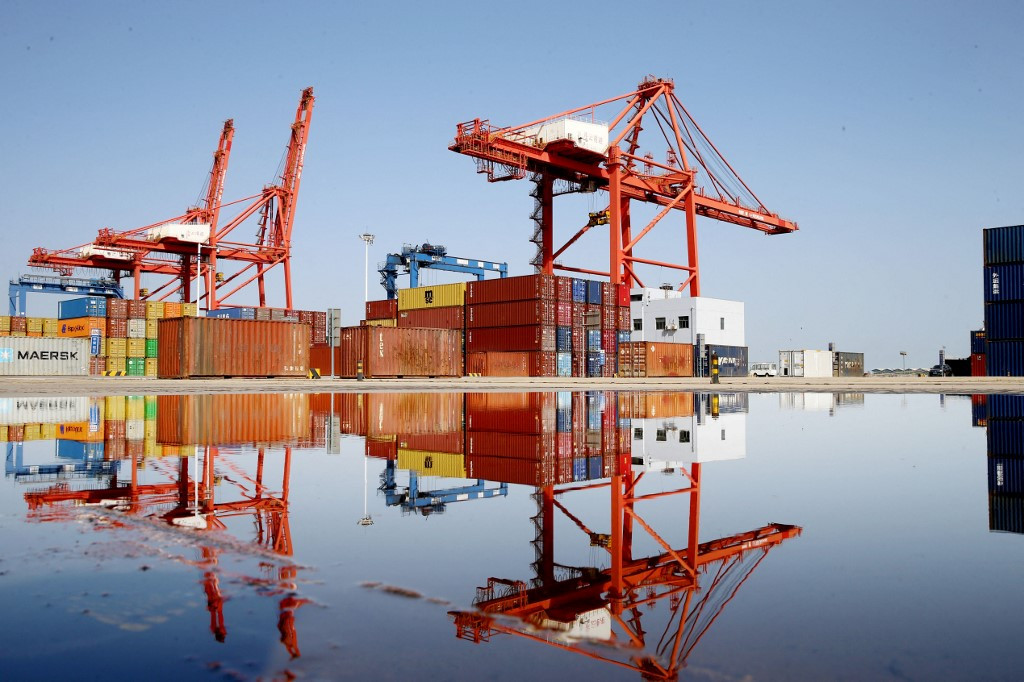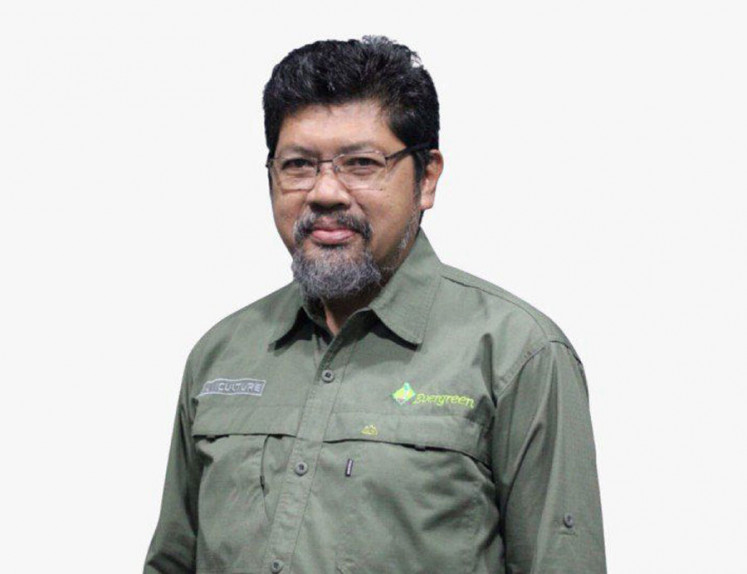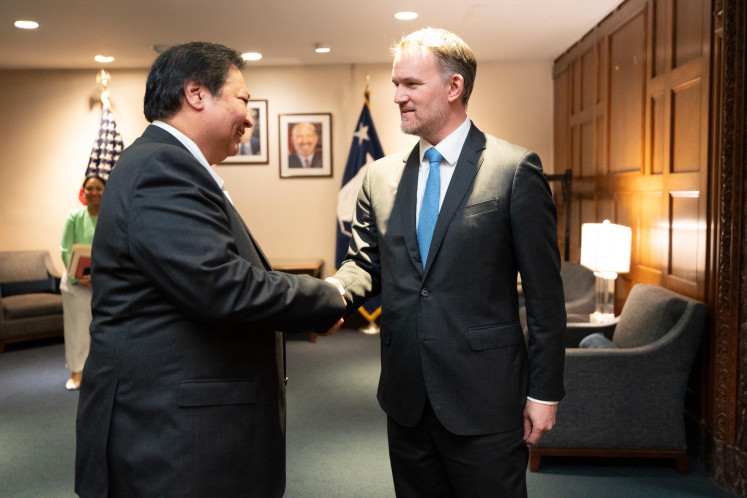Popular Reads
Top Results
Can't find what you're looking for?
View all search resultsPopular Reads
Top Results
Can't find what you're looking for?
View all search resultsChina-US talks matter a good deal for ASEAN
There is little doubt that the future playbook of high tech will mainly be written by interactions between the US and China, through both cooperation and competition.
Change text size
Gift Premium Articles
to Anyone
 Containers and cranes are seen on April 13 at the container port in Lianyungang, in China's eastern Jiangsu province. China said on April 14, that exports soared 12.4 percent year-on-year last month, beating expectations as Beijing navigated mounting trade headwinds sparked by United States President Donald Trump. (AFP/AFP)
Containers and cranes are seen on April 13 at the container port in Lianyungang, in China's eastern Jiangsu province. China said on April 14, that exports soared 12.4 percent year-on-year last month, beating expectations as Beijing navigated mounting trade headwinds sparked by United States President Donald Trump. (AFP/AFP)
A
fter intensive trade talks of a day and a half in Stockholm, United States and Chinese negotiators said that the two sides have agreed to continue pushing for an extension by 90 days of the pause on 24 percent of tariffs by the US side, as well as countermeasures of the Chinese side.
What has been achieved at Stockholm between US and Chinese officials matters a good deal for ASEAN because it first and foremost provides certainty for the region, which is needed at the moment for the bloc’s 10 member countries. No other regional economies in the entire world have deeper economic integration with both the US and China than ASEAN countries.
Data from the US Trade Representative’s office showed that in 2024, total US trade in goods with ASEAN was an estimated US$476.8 billion. In the meantime, Chinese official figures showed that for the same year, bilateral trade in goods between ASEAN and China reached $982.34 billion. China and the US constitute the top two trading partners with ASEAN.
Since former US president Barack Obama told the Australian Parliament in 2011 that “the United States has been and always will be, a Pacific nation”, thus began the US foreign policy of the “Pivot to Asia”. Subsequent US administrations have continued and strengthened their interest and investment in the Asia-Pacific. And ASEAN sits right in the middle of this pivot.
On China’s side, high-ranking diplomats have reiterated in recent years on multiple occasions that China consistently prioritizes ASEAN as a priority in its neighborhood diplomacy and supports ASEAN in playing a greater role in international and regional affairs.
With both sides gearing up diplomatic and economic engagement in the region, several ASEAN leaders, Malaysian Prime Minister Anwar Ibrahim as a notable example, have made it clear quite a few times that ASEAN will not choose sides between the US and China. A temporary truce in trade disputes between the world’s two biggest economies certainly makes it a lot easier for ASEAN countries to continue engaging with both sides.
Technically, a possible agreement between the US and China sets forth the process of negotiating rules of origin between the US and its trading partners other than China. In today’s world, no economy is exempt from the global supply chain and a tariff war between the two largest economies creates chaos and obscurity which no one wants. Being among the economically most dynamic regions in the world, ASEAN is home to companies that actively participate in these supply chains.
A straightforward set-up of US-China trade rules will likely set the foundation for further negotiations between the two largest economies and their respective partners, ASEAN included, on the issue of rules of origin. The result will likely be positive news for businesses that are eager to take advantage of the negotiated results and get their supply chains running healthily again.
Looking ahead, it seems increasingly likely that the future geopolitics will broadly be defined by high tech, as evidenced by the recent revolution of artificial intelligence. And ASEAN’s stake in this is high: A January 2024 estimation by the World Economic Forum found that ASEAN’s digital economy is estimated to grow from approximately $300 billion to almost $1 trillion by 2030.
There is little doubt that the future playbook of high tech will mainly be written by the interactions of the US and China, through both cooperation and competition. So the sooner the two powers figure out how to rebalance the main issues of bilateral relations, the sooner they can start working on issues of multilateral significance, tech being one of them.
An improvement in overall bilateral relations between the US and China will be conducive for our world to embrace the opportunities and brave the challenges of the current generational tech revolution, which eventually will benefit ASEAN, whose future relies heavily on tech.
***
The writer is a commentator with CGTN and former Washington Bureau chief with China Radio International. The views expressed are personal.










